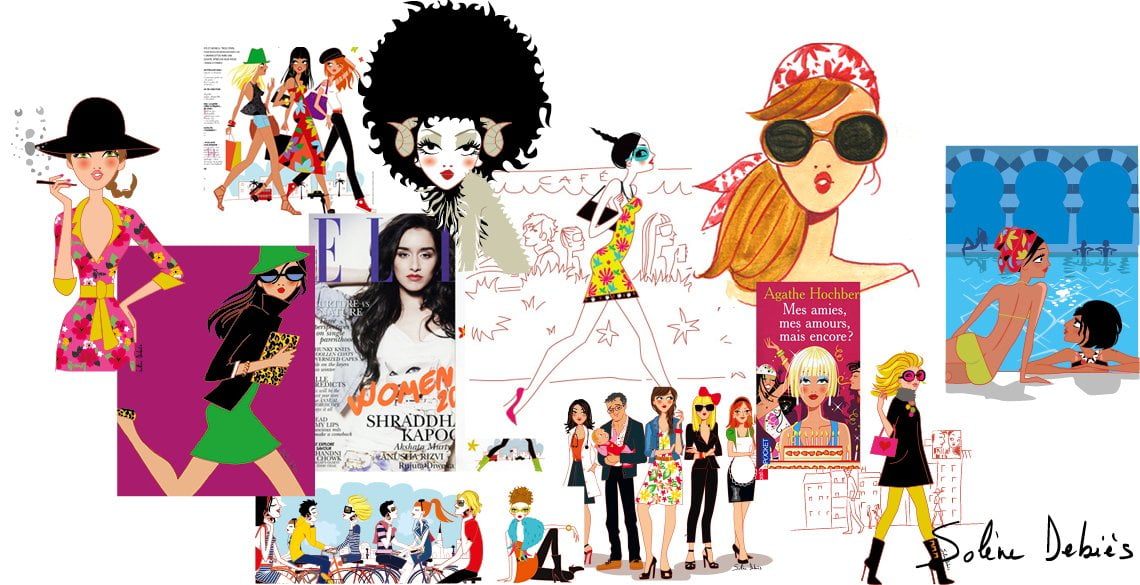An interview about the job of visual artist
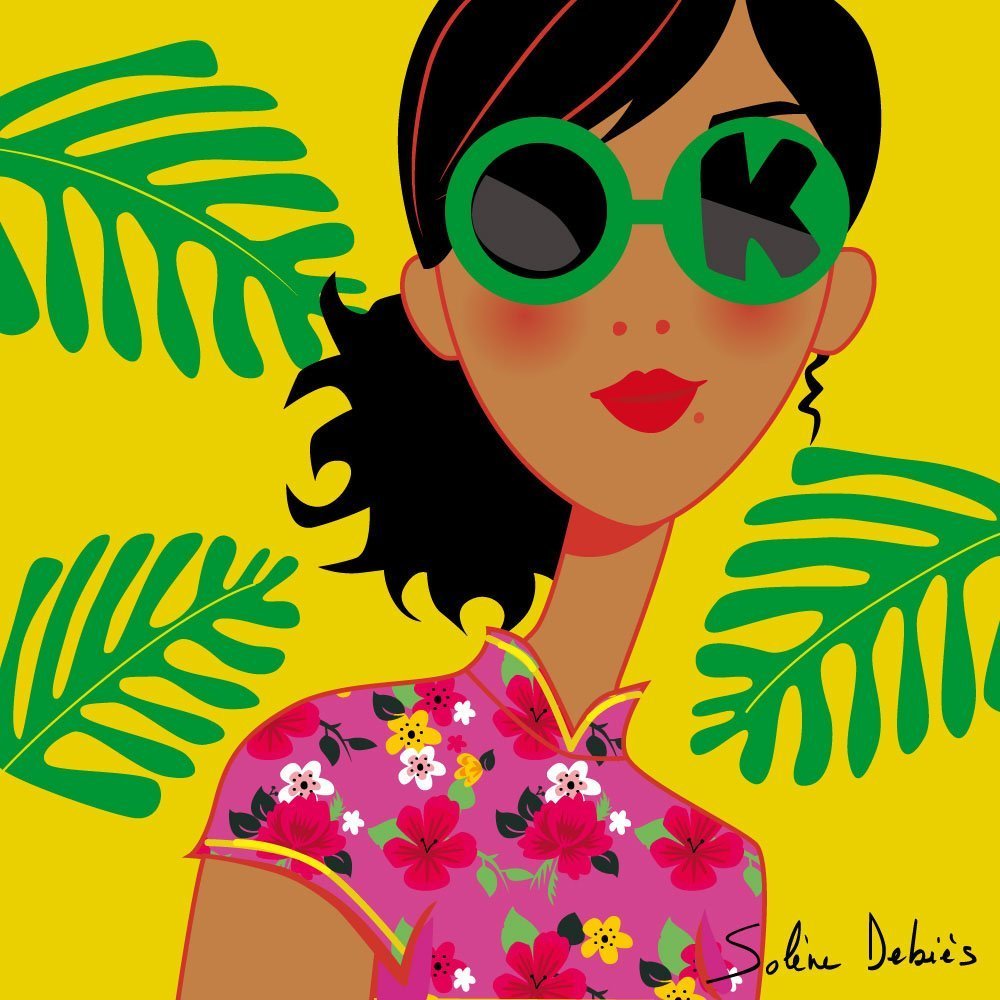
With Solène Debiès, illustrator.
Do you ask yourself questions about the job of an illustrator? How and why do we choose this applied art applied, which is a cross between drawing and graphics? What is the daily life of a french illustrator? What are the steps of an order project?
Well to answer all these questions, I met and interviewed for you, the illustrator artist Solène Debiès. We decided to meet each other in a restaurant in Paris (she lives in Nantes), and we tried to address all the topics and questions that Internet users, professionals or students, could ask themselves about this job.
M.F. Hello Solène! Many of us are familiar with your graphic and colorful character illustrations that appear regularly in magazines, books or advertising campaigns. Can you tell us about your background, to answer this question that you are often asked on your blog:
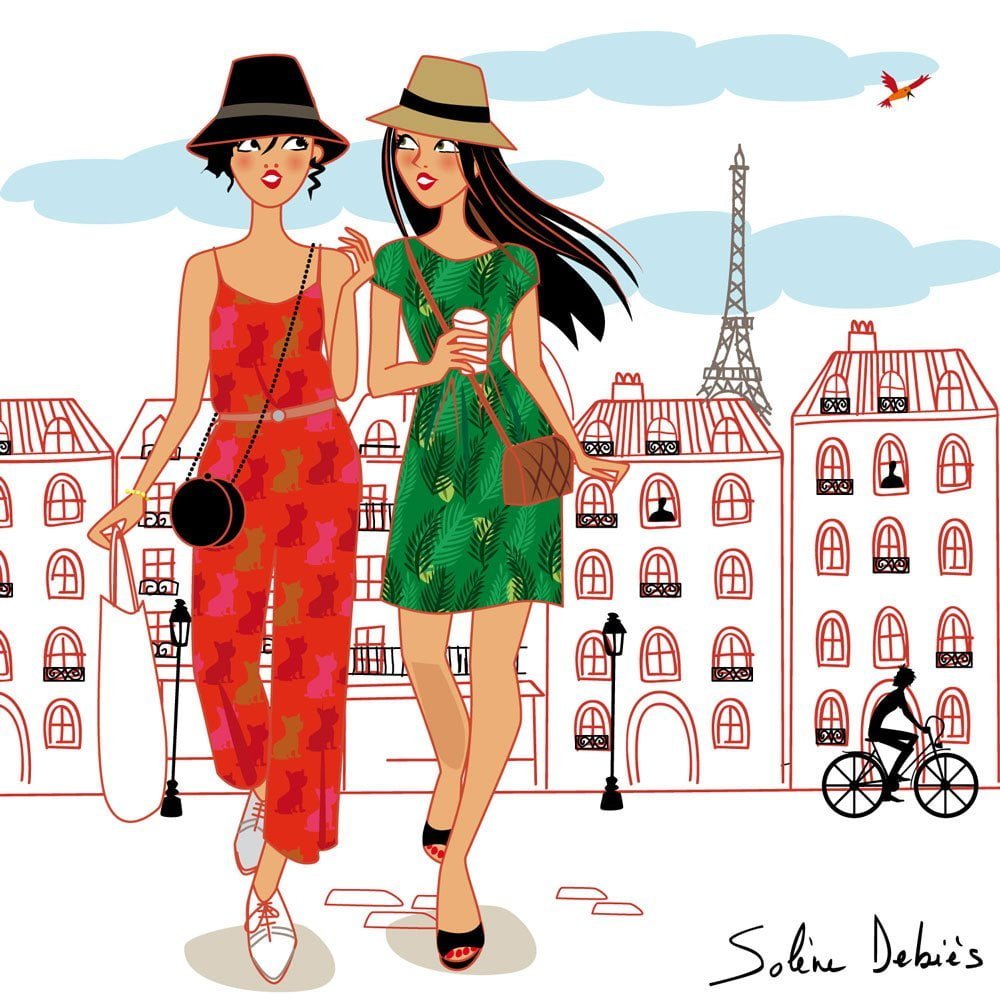
how does one become an illustrator?
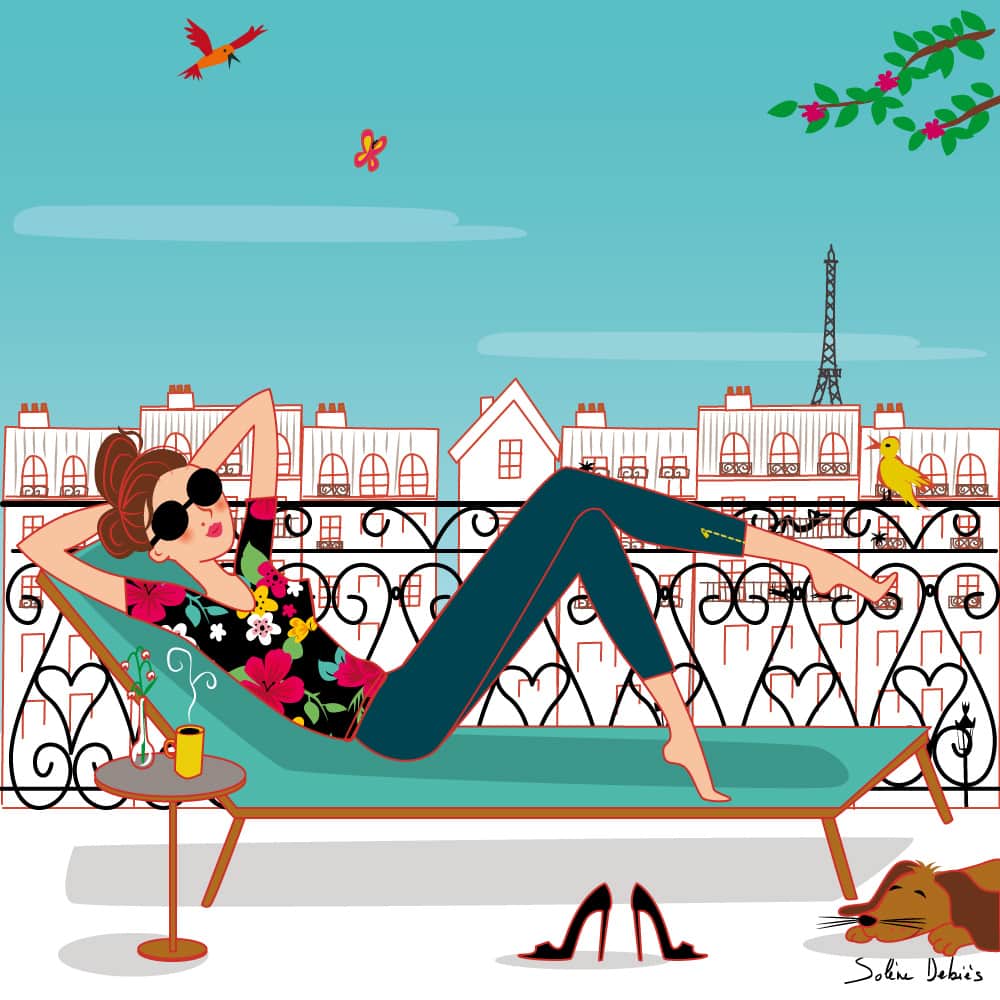
S.D. There are a multitude of possible ways to become a draftsman or illustrator, but the basis is of course to have a taste for images and the practice of drawing. I have always loved drawing, but I did not intend on following a creative and graphic arts job when I was a kid. I loved science and mathematics in particular, and professors like my parents wanted me to pursue a career as an engineer or scientist … The margins of my draft equations and algebra calculations were covered with little sketches of characters.
“My dream was to draw, but I didn’t think it was possible to make a career of it”
and none of my high school or college teachers pushed me in that direction! My passion for graphic arts grew, I was also interested in fashion, painting … And one day, the penny dropped. At the end of my final year at high school, against everyone’s advice and recommendations, I enrolled in a school of applied arts in Nantes! I passed my A levels, and to the dismay of my school environment I stopped math and science to learn drawing and graphic arts.
Do you think that your training in Applied Arts and Narrative Drawing has been an asset to your artistic career?
As for many courses or graduate studies, my school especially allowed me to open my mind on drawing-related disciplines, such as graphic design (which at the time was still practiced mainly with markers and collages!), painting but also design or architecture. These artistic studies have also given me the basics to use the digital tools used for creating such as Adobe Illustrator. It was very new for me, and at the time I didn’t think that a computer would have an important place in my practice of visual arts and drawing! We also learned how to work on projects, to decipher an image, to understand a brief and work as a team on certain projects. I continued to practice drawing for pleasure, but this long studying period allowed me to take a new critical look at my artistic and graphic creations and reflect on my images.
“I started to develop what is still my illustrative “style” today…”
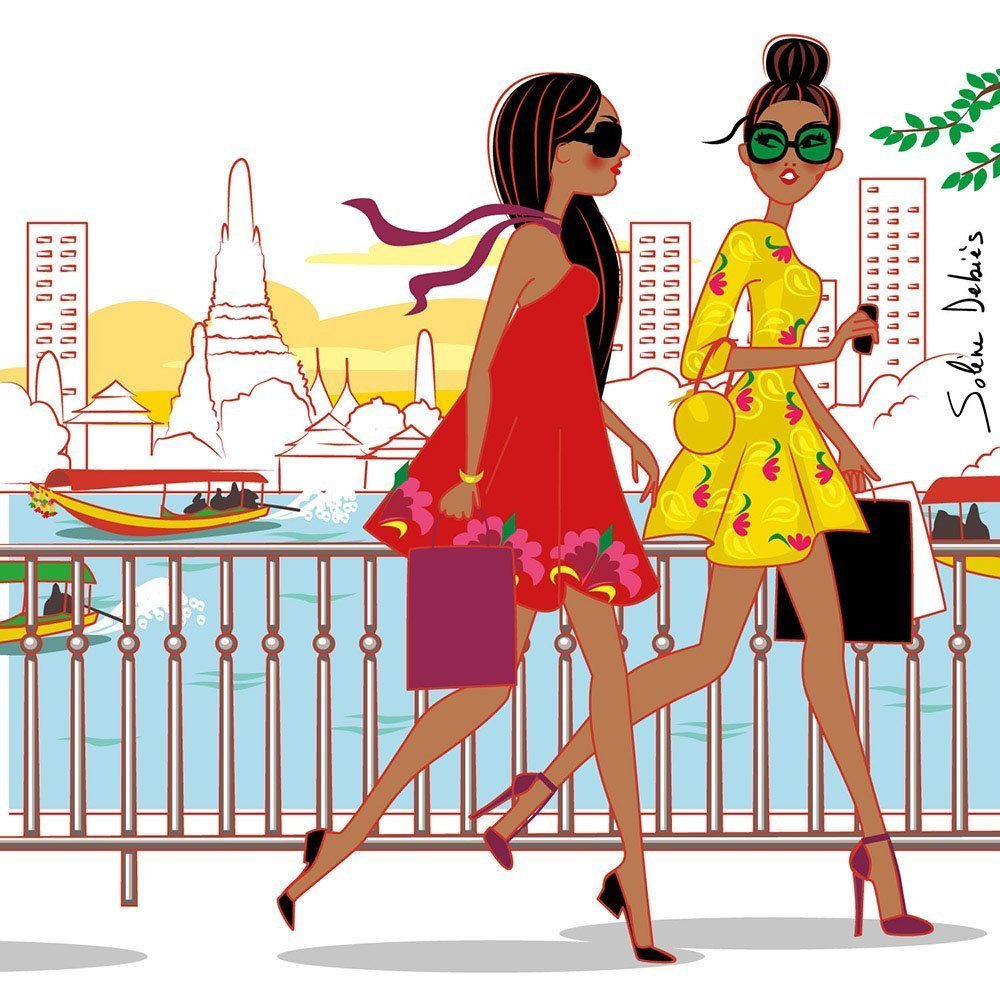
… and to improve from a technical point of view in drawing and computer tools for the realization of the illustration. This is where I learned to master the Adobe Illustrator vector drawing software, which I still use today to make many of my images.
How did you start your career as an illustrator?
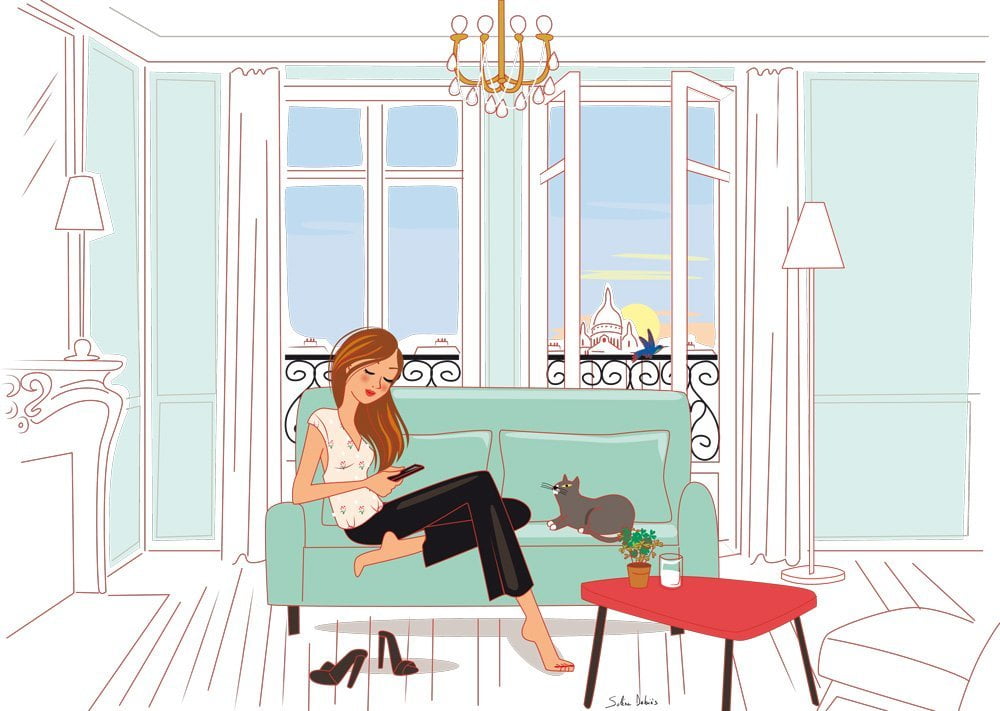
In June 96, I was 21 years old and I had just finished my school of Applied Arts and narrative drawing. In July, freshly graduated, I responded to an ad for a position as a graphic designer in an advertising agency in Nantes. I started in August! It was a very versatile job: I created logos, I did a lot of graphics, layout for posters, catalogs, brochures, magazines …
“I started to learn how to analyze a brief, to exchange with customers, to work as a team on concept proposals …"
There was also quite a technical part with the monitoring of the production with printers (because it was before the digital age, in the era of printing “!). We sent files on ZIP diskettes to a photoengraver, we validated the proofs, we went back to the printer to validate the passed for printing … In short, this first job as junior art director allowed me to touch different trades in the design and graphic chain. But even when I started to offer my illustrations in almost all projects, I missed the drawing … I was already following the work of famous illustrators like Jason Brooks or Jordi Labanda at the time, designers like Sempé or Mario Miranda, and I decided to devote myself entirely to drawing and illustration. So I started as a freelance illustrator after 3 years in this advertising agency.
How did you find your first customers?
I became acquainted with different creative professionals and the graphic industry in the Nantes region during my 3 years spent in the advertising agency. In particular, with printers and photographers. As soon as I started freelancing, a fashion and ready-to-wear brand asked me if I could take care of the artistic direction of its catalogs. They were very big projects to manage for me at the time, but it was extremely interesting and it gave me some financial visibility to develop my illustration business. I had suggested a graphic concept catalog based on illustrated decorations in which we then added the photos of the models. I chose the photographer, the models, I drew the scenes to photograph in rough shapes, I realized the layout of the catalogs, I followed the impression … in short I took care of everything, all alone!
“And next I drew! So I started to build a portfolio or a book of illustrations”
that I showed to agencies and some potential buyers. It was before the internet days, blogs and Instagram, and to be seen well you had to meet the interlocutors … So let’s say that to find my first customers, I began by prospecting … I contacted the magazines and advertising agencies by phone, in Nantes, but also in Parisian region, and I was going to show them my books and portfolios!
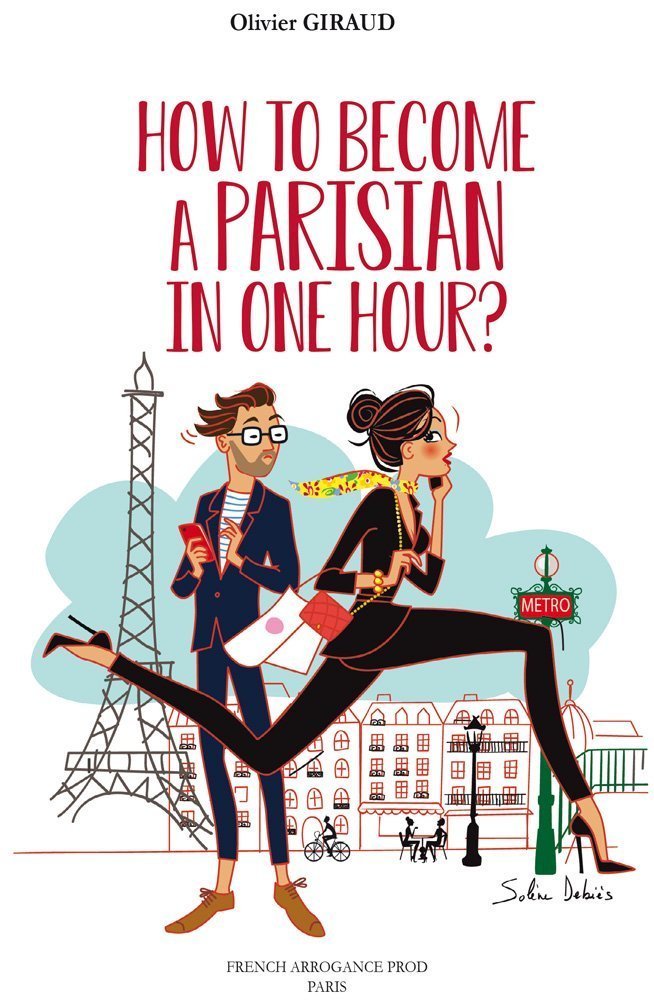
And what were your first orders?
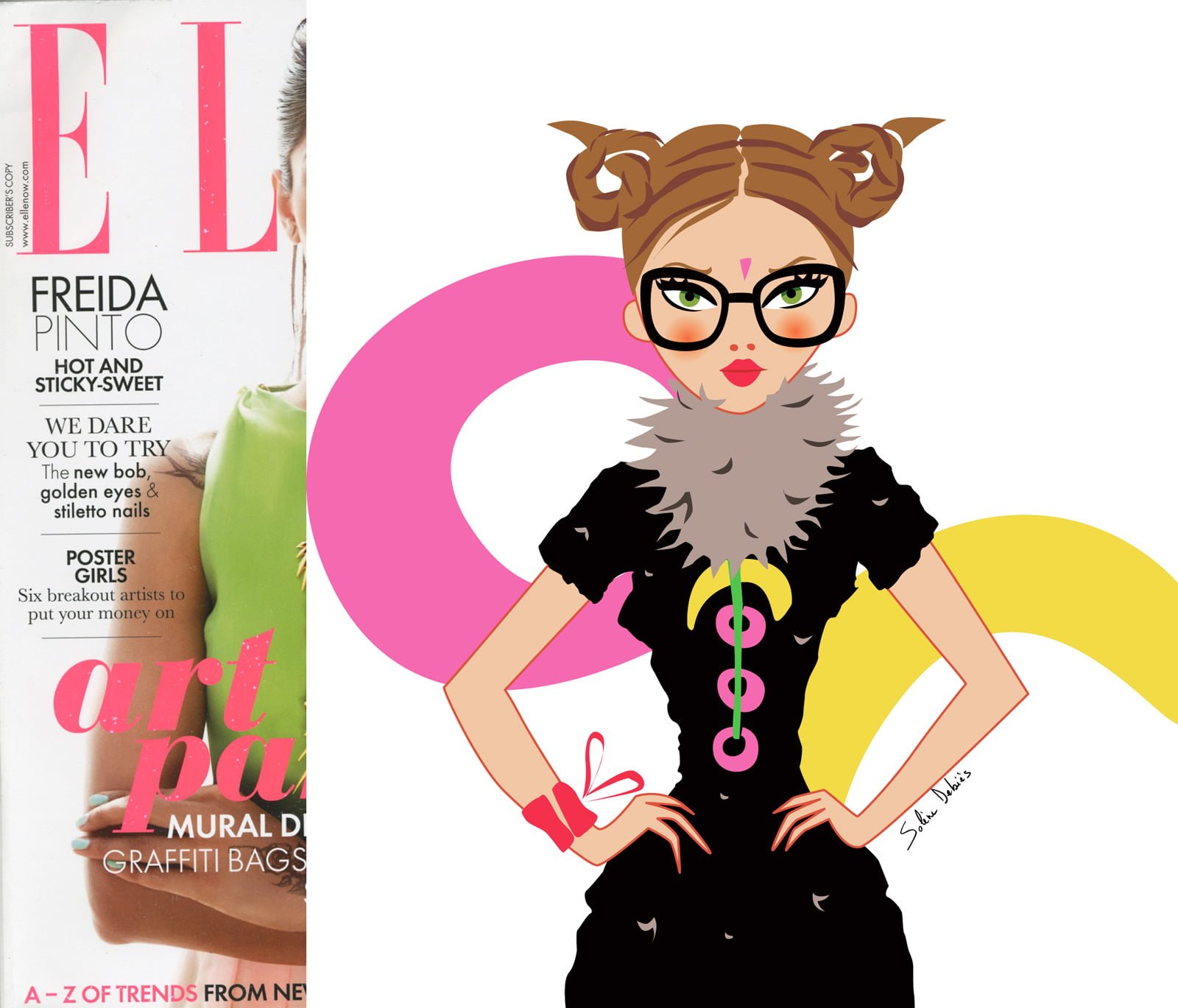
In the early 2000s, I worked primarily for institutional clients, such as town halls, general councils, chambers of commerce and industry. I created editorial illustrations for their magazines or newsletters, posters for cultural events, institutional communication. Then very quickly I had orders for the press and women’s magazines: Young and Pretty, Current Woman, Le Figaro, Marie-Claire. Then editorial illustrations and the first illustrations for fashion and beauty. Companies and some brands were also starting to appeal to me for creations of drawings or graphics for their communication and some logos.
At the time I was already traveling a lot, and
“during a trip to India I had the chance to meet the editorial team and the artistic management team of ELLE India magazine”
, based in Mumbai. After that meeting, a regular collaboration followed lasting for more than 7 years that gave me some international visibility. This collaboration has allowed my work to be known to more people in world of fashion and beauty: I worked for other fashion and beauty magazines, and brands like Ictyane or L’Oréal became interested in my drawings. In parallel I also started working for brands in the United States such as Paypal, Tupperware or the Zizou perfume brand.
How is your professional life organized today? How are the days of a freelance illustrator organized?
My years are already organized in 4 different periods. The months of September to December are for me a great production period. I answer my orders for projects in the fields of advertising, publishing, magazine press. From January to the end of March I usually go on a trip with my family (my husband and 2 daughters), in Asia or in America generally.
“My travels are both times when I will find inspiration, creative and research periods, but also privileged moments to meet other artists or creators.”
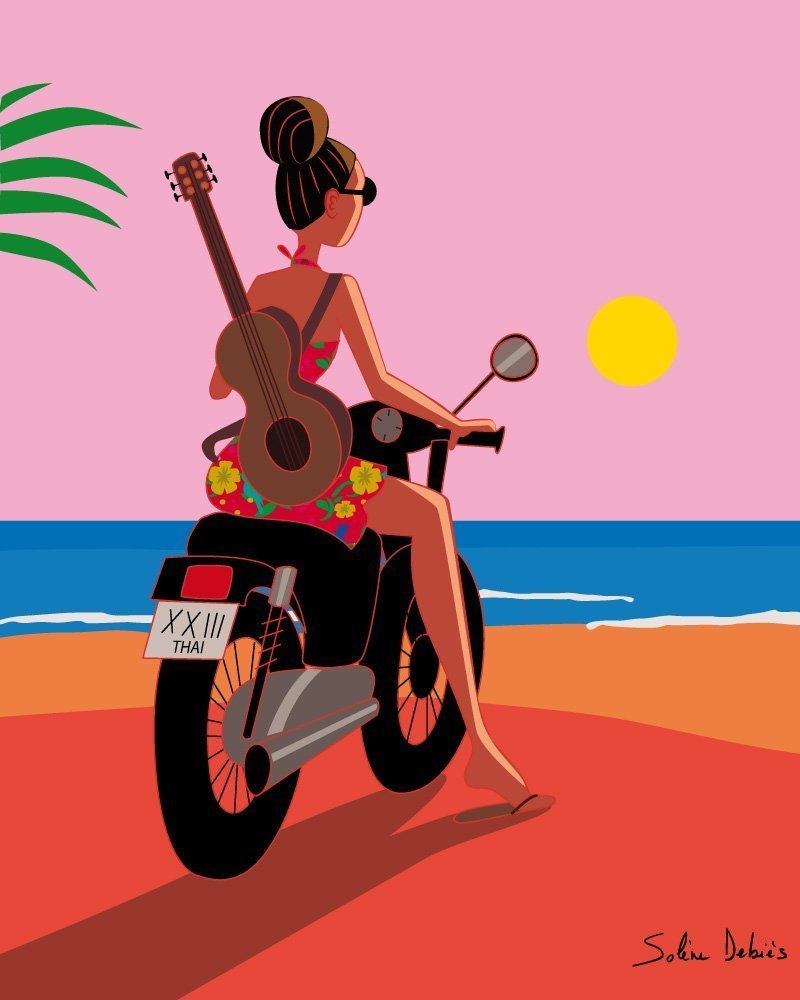
I have always travelled a lot; it is absolutely essential for me. When I return, the months of April to July are again dedicated to creating and producing. And the month of August is the holiday month in the wild, spent usually in Quercy that I particularly like … a month of family relaxation always punctuated with lots of small research, sketches and pencilled sketches to find the ideas that will fuel the creations of the year!
Then, at the level of my daily life when I’m in France, I try to organize my days and schedule so as not to be overwhelmed and always have time to devote to creating. In the morning, I spend about 1 hour to corresponding by email. My husband, who is also my partner in the creative studio, helps me a lot in all administrative and commercial tasks such as quotes, legal aspects, etc. Around 10 am I turn off all my means of communication to be able to create. I spend about 4 days a week on creative projects for customer orders (books, magazines, advertising, communication and branded content) and I try to keep myself at least a full day in the week for personal research. Then in the late afternoon, I spend a little time on correspondence with customers, partners, administrative aspects.
The most important thing is not to become overwhelmed by an overload of work. So I try to keep a back-up of all my projects up to date, and for each project an estimate of the estimated working hours spent. When a customer asks me to make a quote, I always give a deadline that allows me not to find myself “under water” at any certain time … There is nothing wrong with being a little overloaded with production tasks, but for me creating requires tranquillity, time, and time to breathe … So I organize and fill my schedule but never overload it. And this is not the simplest of tasks because customers often have very short deadlines and have trouble understanding that creation takes time and a breath of fresh air!
And precisely, how do you manage the relationship with your customers?
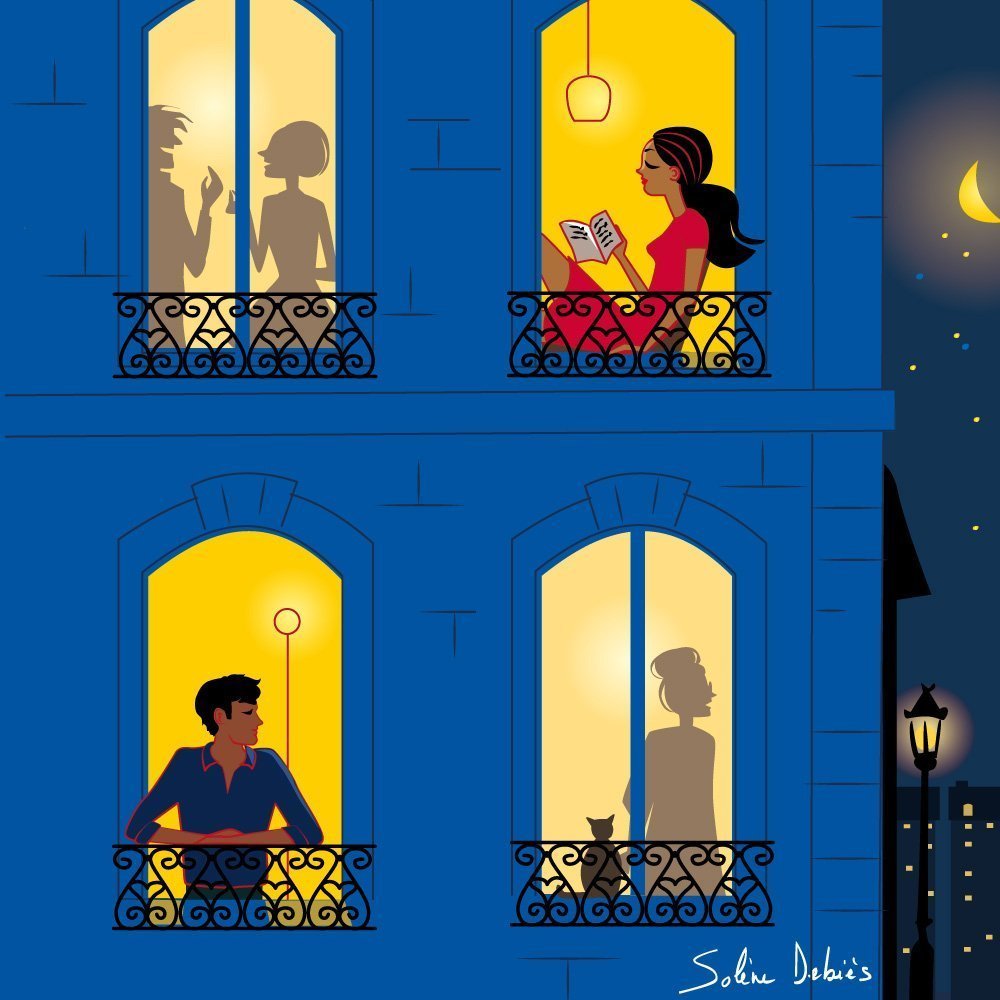
Well, there are as many different relationships as there are customers! I try, at first, to go toward projects that interest me or motivate me. There are clients who are professionals in creation, publishing, advertising or communication. These people are generally well aware of the needs and constraints inherent in an illustration or graphic design project. Their request is usually precise, concise, detailed. Their brief is clear and understandable. The order and copyright management contract is simple to establish and has a solid foundation.
“I can devote myself directly to the creation, that’s sort of my job"
And then there are clients who are project promoters: authors or writers, entrepreneurs, start uppers or fashion designers. Their project is often exciting, but a lot of time must be spent with them to help them define their needs in terms of creation, to establish an estimate, a work order and a rights managements contract … It’s often a little adventure, but when I have a bit of time and the project really motivates me, I go for it.
Is there an important administrative and legal aspect to consider in the illustrator’s job?
Yes of course because some projects represent real challenges, and it is absolutely necessary to perfectly supervise them both from the point of view of the order process and the transfer of rights. An illustrator agent allows many creators to overcome these steps. This is my case in some countries, such as the US in particular, where the copyright is different. But in France I take care of these aspects directly with my lawyer, who specializes in copyrights and industrial property. I have been working with him for almost 20 years: the goal is to guarantee the sponsors of the creations that they can use in a perfectly serene way.
As a freelance illustrator, what is your legal status?
I am registered at the Maison des Artistes for all my illustration and creation activities. It seems to me that this is the most appropriate status, but it’s impossible to bill someone for something other than artistic creation or copyright with this status.
What recent projects have marked your career as an illustrator?
Recently, I was delighted to create the illustrations for the operation “Sales and the City” led by the city of Cannes, on the French Riviera.
“The advertising campaign was broadcast on the French Riviera and the London area”
, and I was very impressed by the large format printing on the façade of the Palais des Festivals!
I also created the cover illustration of the novel “The Marriage Clock” by author Zara Raheem from Harper Collins in New York. I am always delighted that my graphics can serve as a bridge between the Western and Asian cultural communities, in this case American and Indian!
Finally, I made a series of illustrations for the prestigious luxury house Van Cleef and Arpels. The project, under the direction of Makeheia advertising agency, was a pleasure!
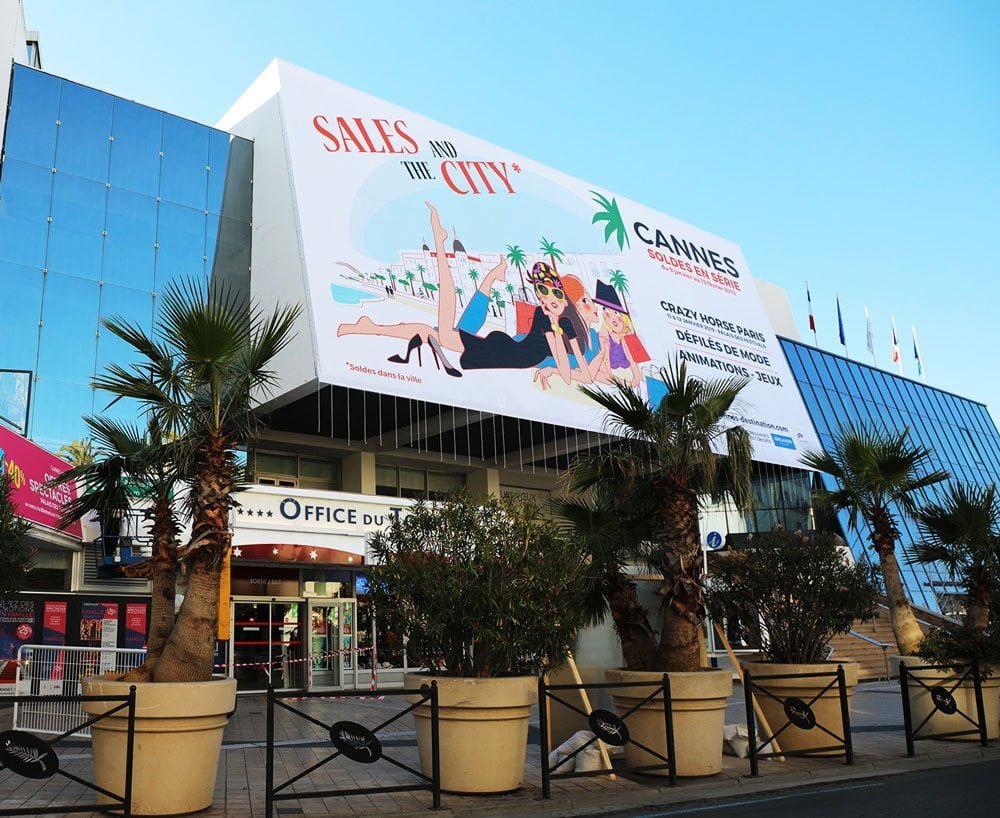
How could you describe your style of illustrations?
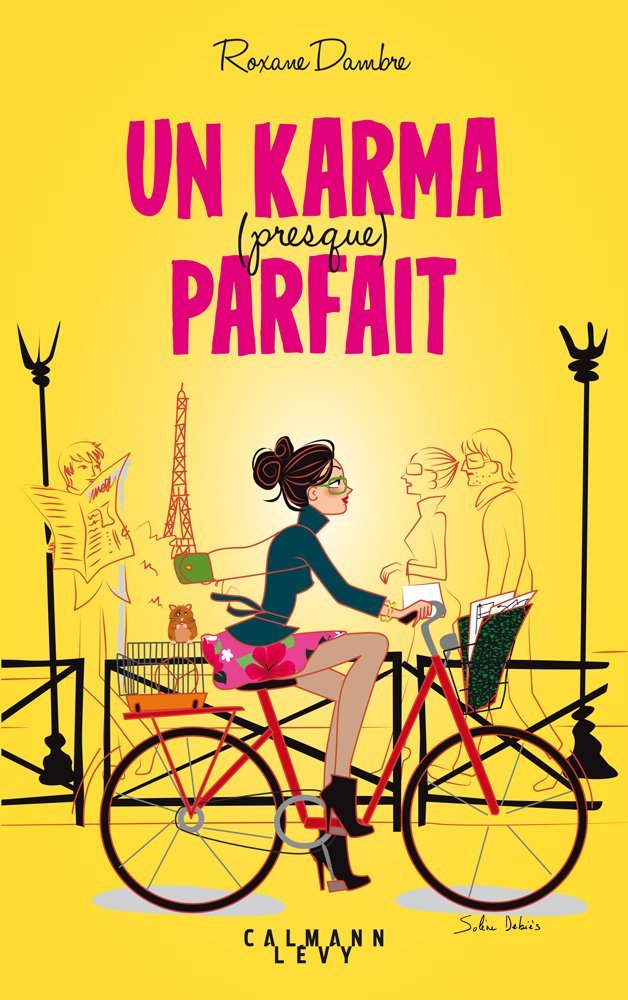
I make drawings both simple and narrative, and at the same time quite stylized. My drawing style seems like a “light line”, but sometimes I use shadows and light effects. I have always used a red line to delineate the outline of the drawing.
In terms of techniques, I always start with a sketch on paper.
“I have lots of little notebooks in which I scribble all the ideas that go through my head.”
When I have a little time, I redesign these sketches in a more accomplished way to make a drawing project. When the pencil drawing suits me, either I finish it with a colored pencil, acrylic, watercolor, red chalk or felt, or I scan it and import it into the Illustrator vector drawing software. From there I work with the “feather tool” or “Béziers curves”, which are the basis of the principle of vector drawing. It may seem a little tedious to draw with this technique, but for me it’s been over 20 years and it’s as if my designer brain was directly connected to the software’s algorithm!
Regarding my favorite subjects, I draw mainly scenes of everyday life where the main characters are women, both determined, conquering but vulnerable. They always remain soft, light and funny. They are sometimes surrounded by men, in urban universes or interior architectures that can be described as “lifestyle”. I always try to put a little humor and lightness into my characters and my illustrations, because I claim to practice a minor, light and colorful art, so enjoy it! I love the work of comic artists such as Voutch, Sempé or the Indian Mario de Miranda. Without defining myself as a humorist, I try to make the characters in my lifestyle, fashion or beauty illustrations smile and light.
In any case, I often find myself smiling! And for the future, do you have projects, desires?
Yes, I have many desires and lots of projects!
- Firstly, I’m working on a personal book project.
“It is an illustrated book whose common theme is of course the woman in postures and graphic situations of our contemporary time!”
I bring back some of my favorite illustrations and I’ve recreated others specifically for the book. I try to combine illustrations that could be described as narrative, with purely graphical illustrated objects. I have almost all the material for the book today, I am now working on the orchestration of the images and on the layout. I cannot wait to finish it!
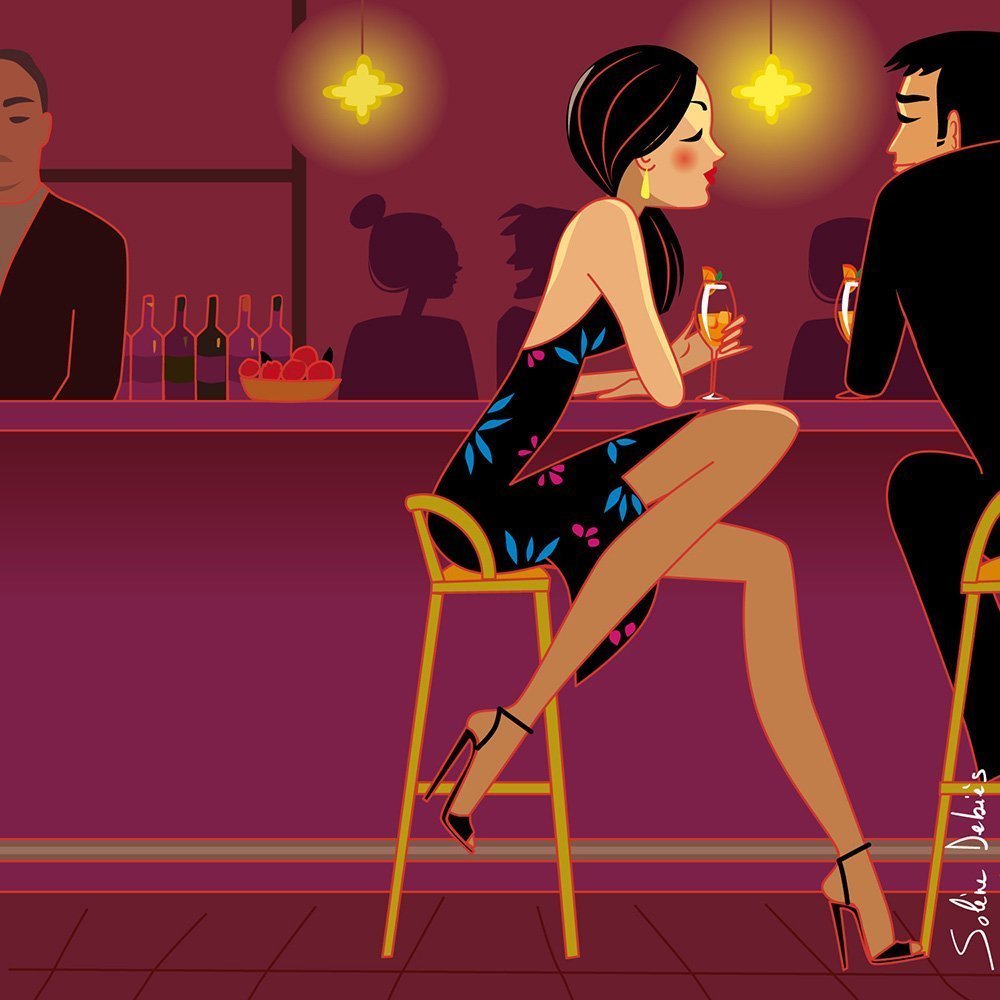
- Number 2 I would like to create a scenography featuring my characters, then expose it, recreating sound dialogues between characters, atmospheres … I work with my husband, who is also a sound designer, on an immersive installation around of my universe.
- Number 3 I’d like to develop a small structure to edit my images. I have a lot of demand from the public, and if I sell some illustrations one by one via my website (I can have some made-to-measure prints made), I would like to publish poster collections, single posters, postcards, some objects … I’ve had this publishing project for years and I still have not managed to find the time to do it well.
- Number 4: I want to make large sized illustrated scenes (for example a frieze) for architectural spaces. I dream of working for places of transport like airports, train stations, …
- And for number 5: I want to keep some time for traveling, to create for pleasure and of course to take care of my husband and my children!
What a program ! Thank you Solène Debiès
Marc Falco
